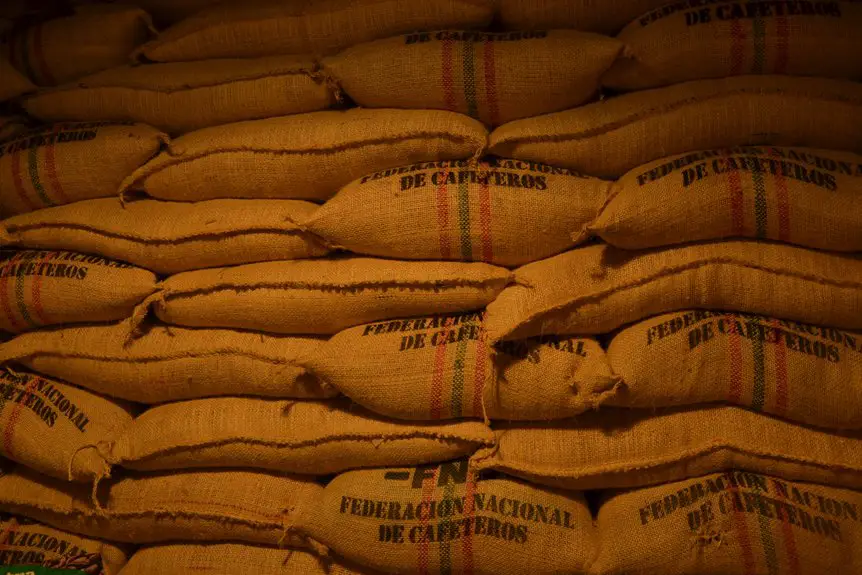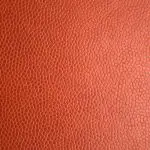When making bags with jute fabric, choose the right type—raw for rustic looks or softened for sleek styles. You’ll love jute’s durability, eco-friendliness, and natural breathability. Use heavy-duty needles and strong thread, reinforcing handles and seams with double stitching. Adding a lining boosts strength and polish. Keep your bag looking great by spot cleaning gently and storing it dry. If you want to know how to pick fabrics and sew techniques, there’s more to explore here.
Table of Contents
Key Takeaways
- Choose appropriate jute fabric type based on bag style, balancing texture, weave density, and weight for durability and appearance.
- Reinforce handles, seams, and stress points with double stitching and backstitching using heavy-duty needles and polyester thread.
- Enhance bag strength and aesthetics by adding fabric lining and using fabric sealant spray for moisture and stain protection.
- Design bags with minimalist or embellished styles, incorporating prints, embroidery, or patches without compromising durability.
- Maintain bags by spot cleaning with mild detergent, storing in cool dry places, avoiding overloading, and air drying after cleaning.
Understanding Different Types of Jute Fabric
Although jute fabric comes in various forms, you’ll find that each type offers unique qualities suited for different bag-making needs.
When you choose raw jute, expect a coarse texture that’s perfect for rustic, durable bags. If you prefer a smoother finish, look for softened or bleached jute, which is easier to dye and works well for stylish, everyday bags.
There’s also hessian or burlap, a loosely woven jute variant that’s lightweight and breathable—great for grocery or beach bags.
Keep in mind the weave density and thickness, as tighter weaves provide more strength, while looser ones add flexibility.
Understanding these differences helps you pick the ideal fabric for your project, balancing durability, appearance, and function without guesswork.
Benefits of Using Jute for Bag Making
Jute offers several advantages that make it an excellent choice for bag making. When you use jute, you benefit from its natural strength and durability, ensuring your bags last through heavy use.
Jute’s natural strength and durability make it ideal for creating long-lasting, reliable bags.
It’s also eco-friendly, as jute is biodegradable and grown with minimal pesticides, so your bags are sustainable. You’ll appreciate jute’s breathability, which helps prevent moisture build-up and keeps contents fresh.
Plus, jute’s coarse texture gives bags a rustic, stylish look that appeals to many. Its affordability means you can produce quality bags without breaking the bank.
Finally, jute is versatile and easy to work with, allowing you to create various designs and styles. Overall, jute makes a smart, practical, and environmentally responsible choice for your bag projects.
Selecting the Right Jute Fabric for Your Project
When choosing jute fabric for your bag, consider the different types available and how their weight and texture fit your design.
You’ll want to balance durability and strength to guarantee your bag holds up over time.
Paying attention to these factors will help you pick the best fabric for your project’s needs.
Types of Jute Fabrics
Choosing the right type of jute fabric plays an essential role in determining the durability and appearance of your bag.
You’ll find several types of jute fabrics, each suited for different bag styles and functions. Here are three common types to take into account:
- Hessian/Burlap: Coarse and rough, perfect for rustic, sturdy bags.
- Sacking: Medium weave, offering good strength and a balanced texture.
- Twill weave jute: Smooth and tightly woven, ideal for a polished look.
Fabric Weight and Texture
Beyond selecting the type of jute fabric, paying attention to its weight and texture can greatly impact your bag’s functionality and style. Lighter fabrics offer flexibility and a casual look, while heavier ones provide structure and durability. The texture affects the bag’s feel and appearance—rough textures give a rustic vibe, and smoother ones feel more refined. Here’s a quick guide to help you choose:
| Fabric Weight | Texture | Ideal Use |
|---|---|---|
| Light (100-150 g/m²) | Soft, smooth | Tote bags, linings |
| Medium (150-250 g/m²) | Medium roughness | Everyday carry bags |
| Heavy (250+ g/m²) | Coarse, rough | Market bags, backpacks |
| Mixed weights | Varied | Decorative or layered bags |
| Custom blends | Customized | Unique style requirements |
Durability and Strength Factors
Although jute fabric offers an eco-friendly and stylish option, its durability and strength vary widely depending on the weave, fiber quality, and finishing techniques.
To guarantee your bag stands up to daily use, pay close attention to these factors:
- Weave Type: Tight weaves provide higher strength and resistance against wear and tear, making them ideal for heavier loads.
- Fiber Quality: Longer, finer fibers produce stronger fabric, so choose jute with premium fiber for better durability.
- Finishing Techniques: Treatments like waxing or lamination enhance water resistance and fabric toughness, preventing early damage.
Essential Tools and Materials for Working With Jute
Before you start working with jute fabric, you’ll need to gather a few essential tools and materials that make the process smoother and more efficient.
First, have a sharp pair of scissors or a rotary cutter handy to guarantee clean edges. Since jute frays easily, a good quality sewing needle designed for heavy fabrics is a must. You’ll also want strong, durable thread—polyester or nylon works best for stitching jute bags.
Use sharp scissors and heavy-duty needles with strong polyester or nylon thread for neat jute bag stitching.
A sturdy sewing machine capable of handling thick material can save you time, but hand-sewing tools work if you prefer. Additionally, keep pins or fabric clips nearby to hold pieces together securely.
Finally, consider having a measuring tape and chalk or fabric markers to assist with precise construction. With these basics, you’re ready to craft your jute bag confidently.
Preparing and Cutting Jute Fabric
Once you have your tools and materials ready, you can focus on preparing and cutting your jute fabric.
Start by laying the fabric flat on a clean, hard surface to guarantee accurate measurements. Since jute tends to fray, it’s a good idea to secure the edges with masking tape or fabric glue before cutting. Use a sharp rotary cutter or scissors for clean cuts.
Follow these steps:
- Measure twice to confirm your dimensions.
- Mark your cutting lines clearly with tailor’s chalk or a fabric marker.
- Cut slowly along the marked lines to avoid jagged edges.
Taking these precautions will help you achieve neat, precise pieces that are ready for your bag project.
Sewing Techniques Suitable for Jute Bags
Since jute fabric is coarse and prone to fraying, you’ll need to use specific sewing techniques to guarantee your bag holds together well. Start by using a heavy-duty needle and strong polyester thread to handle the fabric’s rough texture. Reinforce seams with double stitching or a zigzag stitch to prevent unraveling. Adding a lining can also reduce wear and improve durability. Here’s a quick guide to effective sewing techniques:
| Technique | Purpose | Tips |
|---|---|---|
| Double Stitch | Strengthen seams | Sew twice along seam lines |
| Zigzag Stitch | Prevent fraying | Use on raw edges |
| Backstitch | Secure thread ends | Stitch backward at start/end |
| Lining | Add durability | Attach inside to protect fabric |
Design Ideas and Styles for Jute Bags
A variety of design ideas and styles can bring jute bags to life, making them both functional and fashionable.
When creating your jute bag, consider how you want it to reflect your personality and purpose. You can keep it simple or add creative touches that stand out.
Here are three design ideas to get you started:
Discover three creative design ideas to personalize your jute bag and make it truly your own.
- Minimalist Tote – Use clean lines and natural jute color for an elegant, eco-friendly look.
- Printed Patterns – Add screen-printed designs or stencils to personalize your bag with bold graphics or quotes.
- Embellishments – Incorporate beads, patches, or embroidery to give your jute bag a unique flair.
Caring for and Maintaining Jute Bags
Though jute bags are durable, you’ll need to care for them properly to keep their strength and appearance intact.
Always store your jute bag in a cool, dry place away from direct sunlight to prevent fading and weakening of fibers. Avoid overloading the bag to maintain its shape and prevent stress on seams.
If your bag gets dirty, gently brush off surface dirt with a soft brush. For deeper cleaning, spot clean using a mild detergent mixed with water, applying it with a soft cloth.
Never soak the bag or use harsh chemicals, as jute is sensitive to excessive moisture and strong cleaners. After cleaning, air dry the bag completely before storing to avoid mildew and odor buildup.
Regularly following these steps will help your jute bag last longer.
Tips for Enhancing Durability and Aesthetics
When you want your jute bag to last longer and look great, focusing on both durability and aesthetics is key.
Start by reinforcing stress points like handles and seams with extra stitching or fabric patches. This prevents wear and tear during regular use.
Next, apply a fabric sealant spray to protect against moisture and stains without compromising the natural look.
Finally, consider adding a lining inside the bag; it not only strengthens the structure but also gives a polished finish.
Here are three essential tips:
- Strengthen high-stress areas with double stitching or patches.
- Use a water-resistant sealant spray to guard against stains.
- Incorporate a fabric lining to enhance durability and appearance.
These steps will help your jute bag stay sturdy and stylish.
Frequently Asked Questions
Where Can I Buy Organic Jute Fabric in Bulk?
You can buy organic jute fabric in bulk from online marketplaces like Etsy or Amazon, specialty fabric stores, and wholesale suppliers. Don’t forget to check sustainable textile distributors or contact local farmers for direct sourcing options.
Can Jute Bags Be Recycled or Composted?
Think of jute bags as nature’s best friend—they’re biodegradable and compostable! You can recycle or compost them easily, reducing waste and giving back to the earth. Just make sure they’re free from synthetic linings or coatings.
How Long Does It Take for Jute Fabric to Biodegrade?
You’ll find jute fabric typically takes about 1 to 6 months to biodegrade under the right conditions. Its natural fibers break down quickly, making it an eco-friendly choice for reducing waste and supporting sustainability efforts.
Are Jute Bags Waterproof or Water-Resistant?
Think of jute bags as umbrellas in a light drizzle—they’re water-resistant but not waterproof. You won’t want to dunk them underwater, but they’ll handle small splashes and light rain without soaking through immediately.
What Are Common Allergens Related to Jute Fabric?
You might react to natural jute fibers, dust, or residual chemicals used in processing. People with sensitive skin could experience itching or rashes. Always test a small area before prolonged contact to avoid allergic reactions.
- A Complete Guide to Surf’s Coconut Bliss Fabric Softener Line - June 30, 2025
- Step-by-Step Instructions to Get Coconut Oil Out of Clothing - June 30, 2025
- How to Remove Fractionated Coconut Oil From Fabric - June 30, 2025







